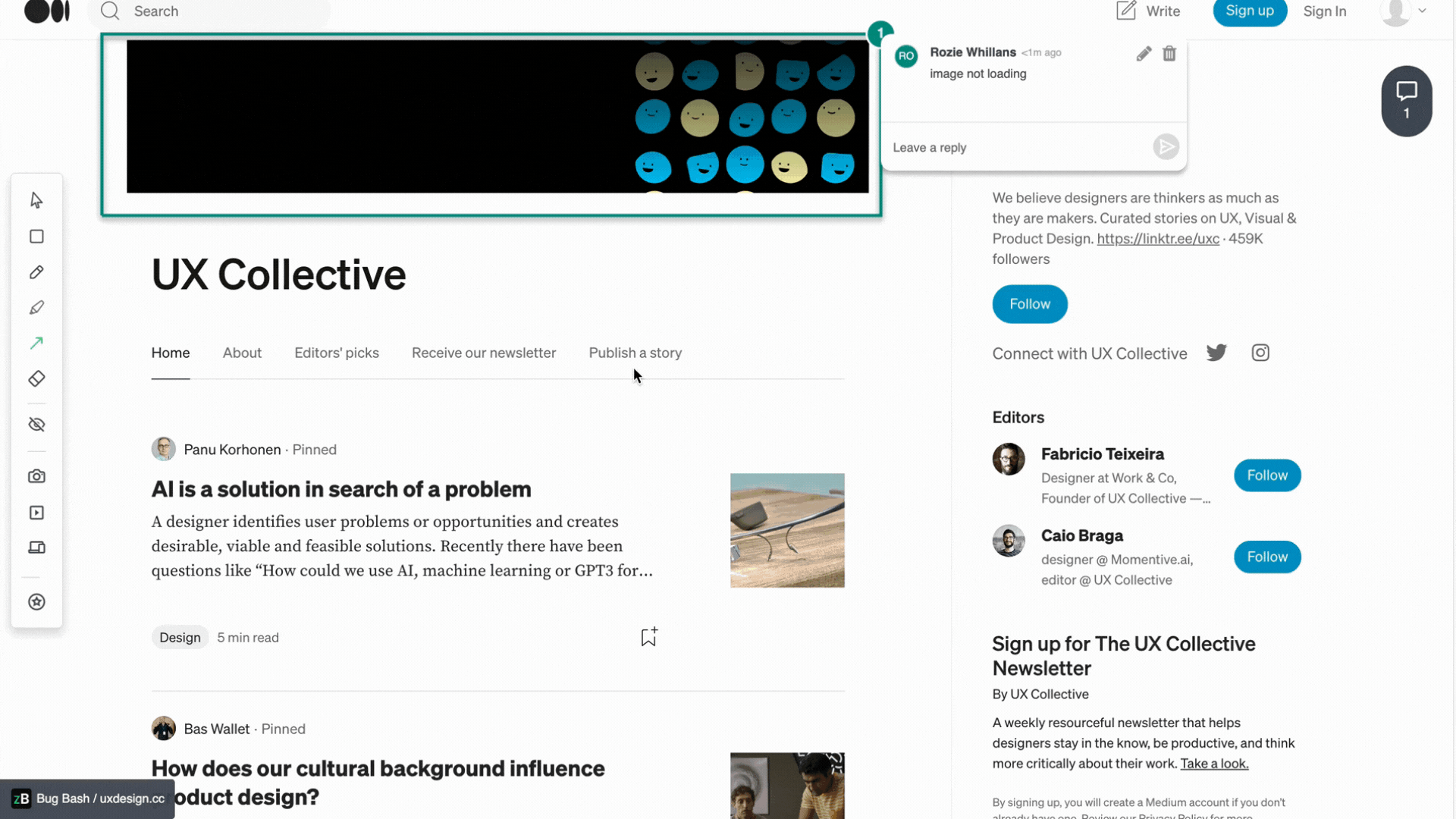A Beginner’s Guide on How to Manage a Remote Web Design QA Team
20 Nov

Table of Contents
ToggleThe rise of remote and hybrid digital work has expanded the possibilities open to businesses and employees alike. Technological advancements make it easier than ever to collaborate with top talents across the globe.
What does this mean for your web design quality assurance (QA) team? Well, managing a remote team requires slightly different skills, strategies, and tools compared to running an in-house team. The goal is to ensure a sense of team unity and allow for effective communication and collaboration despite the physical distance.
In this beginner’s guide, we will explore nine strategies to manage a remote web design QA team successfully.
9 strategies to manage a remote web design QA team
Ultimately, the goal of each strategy is to facilitate the virtual collaboration and communication needed for success. To achieve collaboration and communication, you also need a foundation of trust and transparency.
1. Maintain and encourage professionalism in virtual interactions
Just because you’re not meeting in an office setting does not mean that professionalism does not matter.
It’s easy to get distracted when you’re attending a meeting remotely. Participants might be wearing pajamas, responding to other notifications on their devices, or doing something else entirely while their microphones are muted. As a team leader, you likely would not tolerate this behavior.
Start by addressing your own virtual professionalism and the image you want to project of yourself and the company. Your behavior will then set the standard for others. It’s good practice to wear business casual attire, find an appropriate background, and follow who is speaking throughout. You can also minimize potential disruption by arriving early to test your internet connection, microphone, and camera ahead of time.
If everyone follows these guidelines, you should be able to create a more professional atmosphere in your virtual interactions. This will facilitate more effective communication and allow your team to make progress despite the physical distance.

2. Trust your team and communicate transparently
It’s all about trust, communication, and transparency. In the customer service world, there is technology such as contact center AI solutions to automate responses, streamline customer interactions, and deliver top-quality service. And on top of that, there’s the human touch. For a web design QA team, it’s all about applying the same high standards to internal communications.
The most effective communication is regular and consistent. Don’t leave your team in the dark just because they’re working remotely—if anything, this means that you need to put in extra effort than you might with an in-house web design QA team.
Schedule video and phone calls to keep everyone in the loop. You should be getting the whole team involved in decision-making processes and sharing company updates. After all, you wouldn’t have hired these employees if you didn’t value their input.
With remote team management, you want to err on the side of overcommunication. This means sending messages that cover the 5 Ws: what, when, where, who, and why. Make sure to include all necessary details, even if they seem implied. This is especially important during periods of departmental and organizational change, as with regular communication, things can go smoothly. Don’t leave any team members behind.
3. Set and align your team’s expectations
A common mistake when forming a remote team is not investing enough time to define and communicate goals and expectations properly. From the outset, you want to ensure everyone understands their roles and responsibilities—this clarity will save you time and effort down the line.
So, make sure everyone on the team is on the same page when it comes to your future vision and mission, as well as how they factor in as an individual. It will then be easier for everyone to stay on task and contribute toward shared goals.
Be realistic with these expectations. A benefit of remote teamwork is access to a diverse global talent pool. However, it also means that you need to be aware of geographic and cultural factors when agreeing on expected behavior.
For example, if employees are in different time zones, it’s best to prioritize flexible time management rather than around-the-clock availability. Or, if you are developing a website with a Qatar domain name and working with talent in Qatar, you should be aware that their weekends fall on Fridays and Saturdays.
With all factors in mind, decide on when and how you expect work to be delivered—remember, you can be flexible with remote work! Then, if a team member is falling short of agreed-upon expectations, have an open conversation and create an action plan to provide the necessary support.

4. Use video conferencing and remote desktop access
Be sure to use the tools which are available to you. As working from home has become more popular and accessible, a range of solutions have emerged to facilitate remote communication and collaboration.
For example, a good video conferencing app will help you schedule meetings, screen share, and converse in real time as you work on a project. This will be the virtual space where you share ideas and brainstorm solutions.
It’s also important to ensure that employees can securely access the company resources they need—no matter where they happen to be working. So, you need to grant them remote desktop access. RealVNC’s on demand remote support software provides support as and when a user requests. This empowers employees to work independently and from anywhere.
With a VPN, it’s almost as though employees are taking their work computer with them everywhere they go, but it is all achieved through a virtual private network.
5. Maximize chat tools and instant messaging platforms
Again, this is about communication. Don’t just mention something in passing during a video conference—follow up. Get important details in writing and keep up a consistent stream of dialogue via instant message.
While professionalism should always be a priority, you can also use messaging to check in on employees and build personal connections informally. Allowing team members to interact helps to create a sense of unity and team spirit, which is more difficult to achieve outside of a traditional office setup.
Get the most out of the chat tools available to you—it doesn’t stop at SMS or instant messages. Businesses can also leverage chat bots and conversational AI for short-form communication of key info.
6. Utilize cloud storage and digital asset libraries
It is more difficult for team members to work productively when they do not have easy access to necessary project files and documents. Consider cloud-based storage solutions like Google Drive or Dropbox. The benefits of cloud-based document management include enhanced flexibility and collaboration, as well as better security and recovery options.
Then, there are digital asset libraries, otherwise known as digital asset management (DAM) systems. Here, you can store and organize design assets, style guides, and other resources employees may need to collaborate remotely on web design projects.

7. Leverage design collaboration platforms
A creative project’s success is largely dependent on collaboration between designers. So, design collaboration tools like zipBoard, Figma, Invision, or Mockplus are essential for managing a remote QA team.
Choose a design collaboration platform to facilitate real-time collaboration on web design projects. Enable team members to work on the same design simultaneously from wherever they are, sharing feedback and tracking changes. With the right design collaboration platform, you can make the design process more cohesive and efficient.

8. Track progress and establish a version control system
It is also important to maintain visibility over project progress. Tracking progress can be made easier with automation. Just like how call center automation AI works to streamline customer support and reduce employee workload, web design QA teams can also benefit from AI tools and project management tools.
Project management tools, such as Jira, Asana and Trello, let you transparently track deadlines and tasks. This is important because, as a team leader, it is your job to evaluate the contributions of each individual team member and the overall progress made.
As the team makes progress, you need to implement a version control system to stay on top of the edits made. If you manage changes in code and design efficiently, the team is safe to experiment without risking irreversible harm to the source code. Furthermore, you don’t want any employees wasting time on an outdated version of the design.

9. Ensure strict security protocols throughout the process
Remote team management has its own unique set of data security challenges. It is crucial to maintain strict security protocols. Team leaders should implement robust policies for the handling of sensitive data and then train team members on best practices, including employee monitoring to ensure compliance with security guidelines.
It’s also essential to have a comprehensive privacy policy template in place to ensure that all aspects of data privacy compliance are addressed. This includes outlining how customer data is handled, stored, and protected. Make sure your privacy policy aligns with industry standards and relevant regulations.
It is also important to use secure collaboration and project management tools. When shopping around, look for brands that offer end-to-end encryption, access controls, and audit logs. You should regularly review remote access logs, be on the lookout for unauthorized access, and keep all software and systems up-to-date.
You also need to make staff have experience developing and implementing security protocols. For example, suppose you’re designing a contact centre solution. In that case, your team will need to ensure that customer data will be handled safely and that the solution maintains privacy at all times. This highlights the importance of hiring the right people and fostering a culture of security.

Bonus: Share a website QA checklist with your team
A comprehensive website QA checklist can help ensure that your remote team is thorough in their testing and identify potential issues before they become problems. Consider sharing this checklist with your team to guide their testing efforts and maintain consistent quality standards.
[Free Checklist]
Website QA Testing Checklist
Grab your free copy of the Website QA checklist in Excel. Save time and leave no website element untested.
Download the ChecklistUse Checklist on the WebsiteConclusion
To successfully manage a remote web design QA team, you need to foster a culture of clear communication and build a strong sense of trust. With this foundation, aided by the right tools, your team can collaborate to deliver high-quality results.
By following the above guide, you can successfully navigate the challenges of managing a remote web design QA team and create a collaborative, efficient, and effective work environment. Remember that effective management is a continual process of improvement, and adapting to changing circumstances is key to achieving outstanding results.
Related Post
Recent Posts
- MEP Document Management: How to Streamline Reviews & Avoid Rework October 3, 2025
- What Is Online Proofing Software? And Why Content Review Breaks Without It July 11, 2025
- How Laerdal Medical Cut eLearning Review Time by 50% with zipBoard’s Visual Review Tool July 9, 2025
- Why Your Team Needs a Content Feedback System (Not Just Comments in Docs) May 28, 2025
- Content Approvals Are Slowing You Down — Here’s the Fix May 26, 2025
©️ Copyright 2023 zipBoard Tech. All rights reserved.


